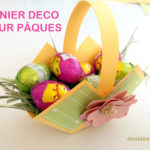library dancer passaniti beton © fp-dr
From its primary forms in Antiquity to its high performance today, concrete has had a turbulent history. Long unloved, he is now returning to success by investing in the field of interior decoration.
The Colosseum, the Pont du Gard, the Pantheon … so many monumental works that bear witness to the birth of concrete in its primitive form: an alloy of lime, stones and sand. But this recipe was lost over time, only to reappear at the beginning of the 19th century, when Louis Vicat, a young French engineer, discovered artificial cement in 1818. A discovery that made concrete a young material compared to its rivals like steel. Concrete blocks, a substitute for real stone, made their debut in 1825 thanks to François Coignet, who subsequently introduced profiled irons into it. Reinforced concrete promises to be … François Hennebique designed it in 1892 by introducing into the mixture a system of reinforcing bars in round irons, with which he built a building in rue Danton in Paris in 1899. From the beginning of the 20th century, concrete became the essential building material: architects competed in creativity. But after the war everything changed: for the collective conscience, the concrete remained essentially gray, sad and cold, at the origin of the soulless towers of the architecture of this time and of the first low-cost housing of the 1960s. Quick constructions , effective but austere. Revenge of fate for some, a real revolution for others, concrete is making a strong comeback today to invade our daily lives in new forms, light, refined or colored, even translucent! Thanks to the chemical industry, resistance and setting techniques are constantly improving and concrete is available in a thousand and one ways depending on its destination. Ultra-high performance concretes, for example, are characterized by their fineness: the aggregates which compose it, of the order of a micron, combine perfectly with the water, precisely dosed. In the end, all daring is possible. Hallucinating forms of lightness and complexity appear. This is the example of Ductal®, with a resistance 6 to 8 times greater than that of traditional concrete and within which the steel reinforcement has given way to organic or metallic fibers.
“The concrete is erasing; it becomes gesture ”
From the walls, concrete today finds its place throughout the house, from the floor to the furniture. And becomes Art in its own right. According to the architect Rudy Ricciotti, quoted during the exhibition “Concrete: astonish you! “From the Musée des Arts et Métiers in Paris, at the end of 2006,” concrete is erasing; it becomes a gesture ”.



